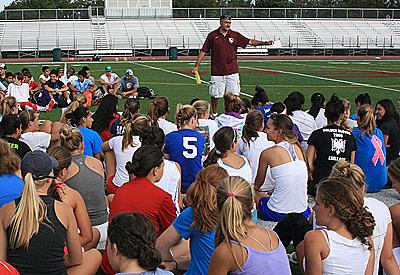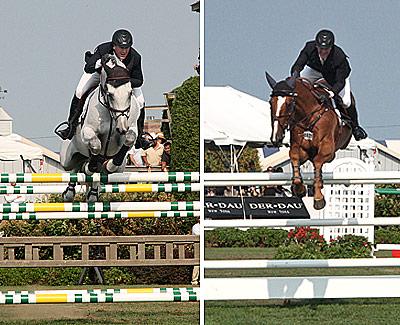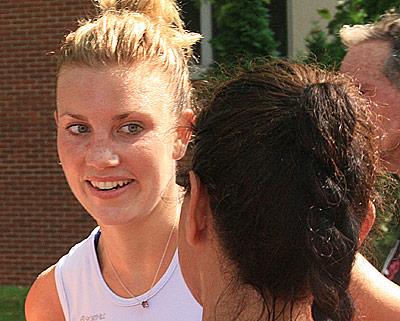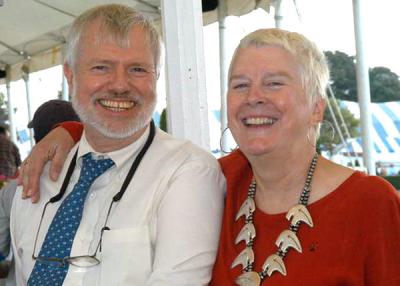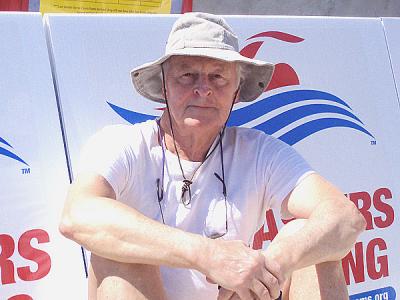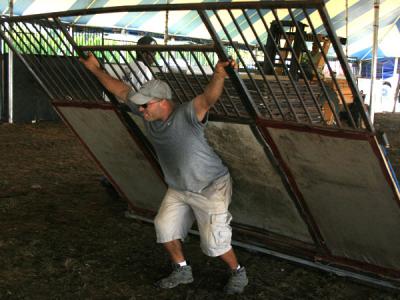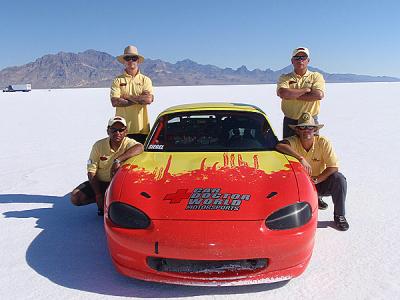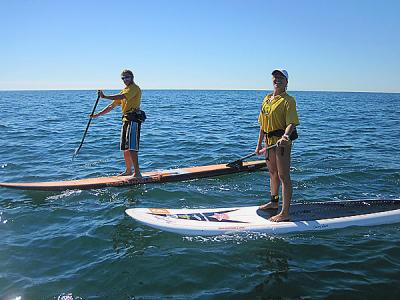Ensign and Kulchinsky Won Great Bonac’s Road Races
Ensign and Kulchinsky Won Great Bonac’s Road Races
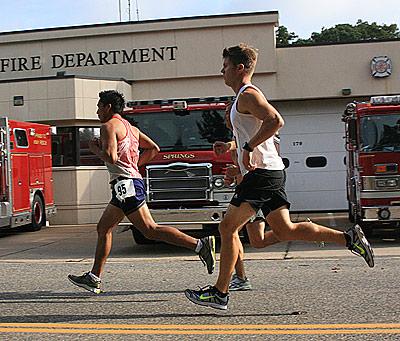
Tim Ensign, a 48-year-old visitor from Chattanooga, Tenn., and Justin Kulchinsky, 38, the owner of Mayfair Rocks, a jewelry store in East Hampton Village, were the winners of the Great Bonac 10 and 5K races in Springs Monday.
Ensign, who first won this race in 1997, and who recalls only having been beaten once, by Geary Gubbins, when he was a high school student, didn’t have much competition this time inasmuch as the 25-year-old Angel Rojas, a Hampton Bays resident who presumably has been too busy to train much in the past few months, was making his first appearance on the running scene here this summer.
Ensign’s winning time was 35 minutes and 58 seconds; Rojas, the runner-up, crossed the Springs Fire Department’s finish line in 38:31, and Jason Hancock, 37, who was to have switched from having taught sixth graders to teaching kindergarteners at the Amagansett School yesterday, was third in 39:04. Tyler Tikkanen, an 18-year-old East Hamptoner, was fourth, in 42:07.
Sharon McCobb, 48, who trains young triathletes here, was the women’s winner, in 44:26, trailed by Heather Caputo, 34, in 47:59, Stephanie Brabant, 35, in 49:25, and Patricia Foster, 43, in 50:23.
Kevin Barry and Diane O’Donnell, East Hampton High School’s cross-country coaches, had most of their charges — those who weren’t working — run the 5K as a practice session.
Kulchinsky, 38, was the 5K winner, in a pretty swift time of 17:51, followed across the line seven seconds later by the Roaring Thunder Track Club’s Trent Hampton, 32. Amar Kuchinad, 37, of New York City, who won several races out here this summer, was third, in 18:04, and Peter Heinz, 29, of New York, was fourth in 18:18.
Patricia Fall, 44, an East Hampton summer resident, who has not run this race — or any other here — in the past, was the women’s winner in the 5K, in 20:14, followed by Ashley West, 17, East Hampton’s top girls cross-country runner, in 20:40, Karen Cotty, 47, of East Quogue, in 21:07, and Dana Cebulski, 14, a promising Bonac ninth grader, fourth in 22:07.
Dana’s brother, Adam, 16, who runs with East Hampton’s boys team, topped the boys 16-to-18-year-old group with a 19:48. The girls winner in that group was Tess Talmage (30:23), with Victoria Nardo second at 37:33. Both are girls cross-country runners.
Other age group winners were Julia Brierley and Cole Shaw, 12 and under; Dana Cebulski and Erik Engstrom, 13 to 15; Dominique Ficalora and Heinz, 19 to 29; Judy Murray and Brian Hennessy, 30 to 39; Claire Bastiancic and Mike Bahel, 40 to 49; Jackie Minetree and Mike Bottini, 50 to 59; Dan Kulchinsky, 60 to 69, and Len Ackerman, 70 to 79.
The 10K age-group winners were Caroline Engelmayer, 13 to 15; Tyler Tikkanen, 16 to 18; Molly Kendall and Michael Franchi Jr., 19 to 29; Ava Locascio and Matthew Tague, 30 to 39; Patricia Foster and Craig Brierley, 40 to 49; Rosemary Camilleri and Nick Microulis, 50 to 59; Bonnie Katz and David Pitches, 60 to 69, and Blaire Stauffer, 70 to 79.
The 5K had a walking category too, with the Castillo family pretty much dominating it. Luke Castillo, 4, was the winner among the walkers, in 36:18, with his father, Mauricio, 41, second in 36:19. Nicole Castillo, 36, won among the women in 38:38, with Corrina Castillo, 7, second in 38:39.
Age group walking winners were Claudia Crotty, 12 and under; Lynne Calabrese, 40 to 49, and Frances Stein and Richard DeSantis, 60 to 69.
Steve Cuomo of Shirley brought along about two dozen members of his Rolling Thunder Club, a highly competitive group of runners with disabilities, including Hampton, Franchi, his son, Steven (second in the 5K’s 19 to 29s), Marcus Sanders (second in the 5K’s 40 to 49s), and Robbie Rex Jr. (fourth in the 5K’s 19 to 29s).
“We’re going to the national Junior Olympics in Wichita, Kans., next year,” said the elder Cuomo. “For the first year, there will be a whole gamut of competitions for the disabled there. We’ll be competing in the national cross-country championships as well. Soon, we’ll be giving a clinic for the Greater Albany Autism Group, in Troy, and the following week we’ll be doing the same thing with Doug Flutie, the football player, who has an autistic son. U.S.A. Track and Field wants to start chapters like ours now. It’s taken me 16 years. . . . Kids and coaches from all over the country will be coming to New York Tech for a clinic we’re giving there next year.”
“Do I think progress [concerning the benefits to be had from engaging the disabled in competitive sport] is being made as fast as I want? No. But I want everything done tomorrow.”

